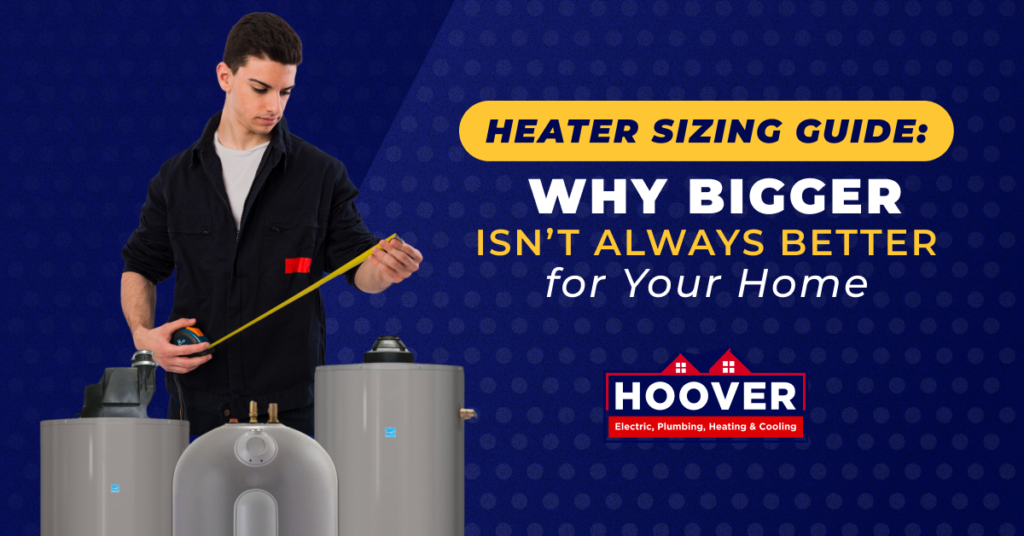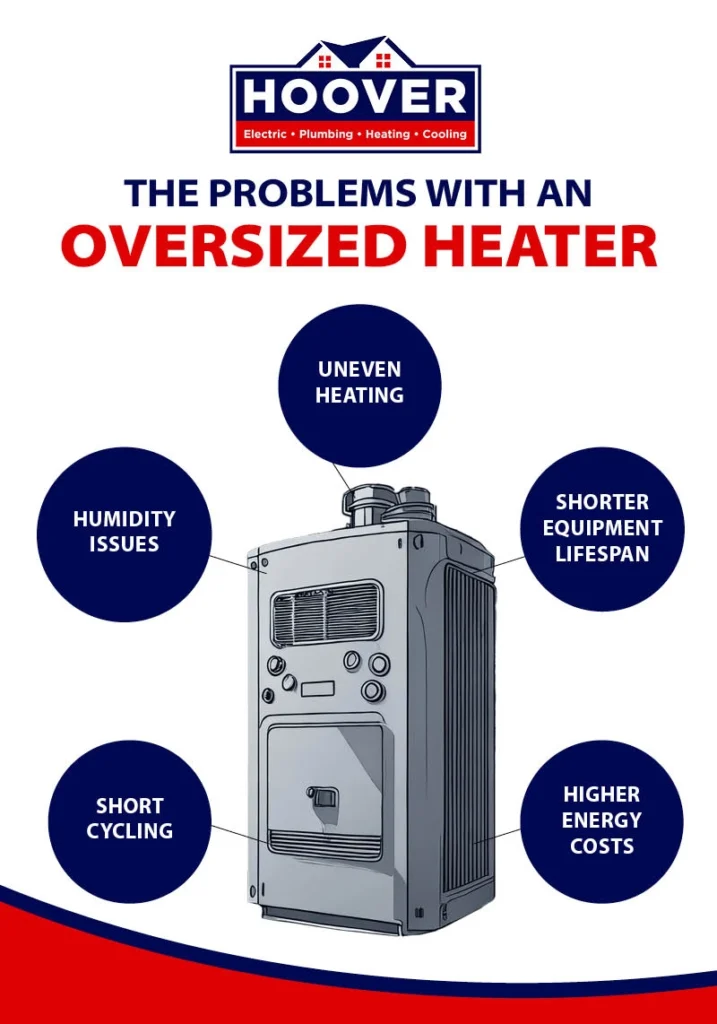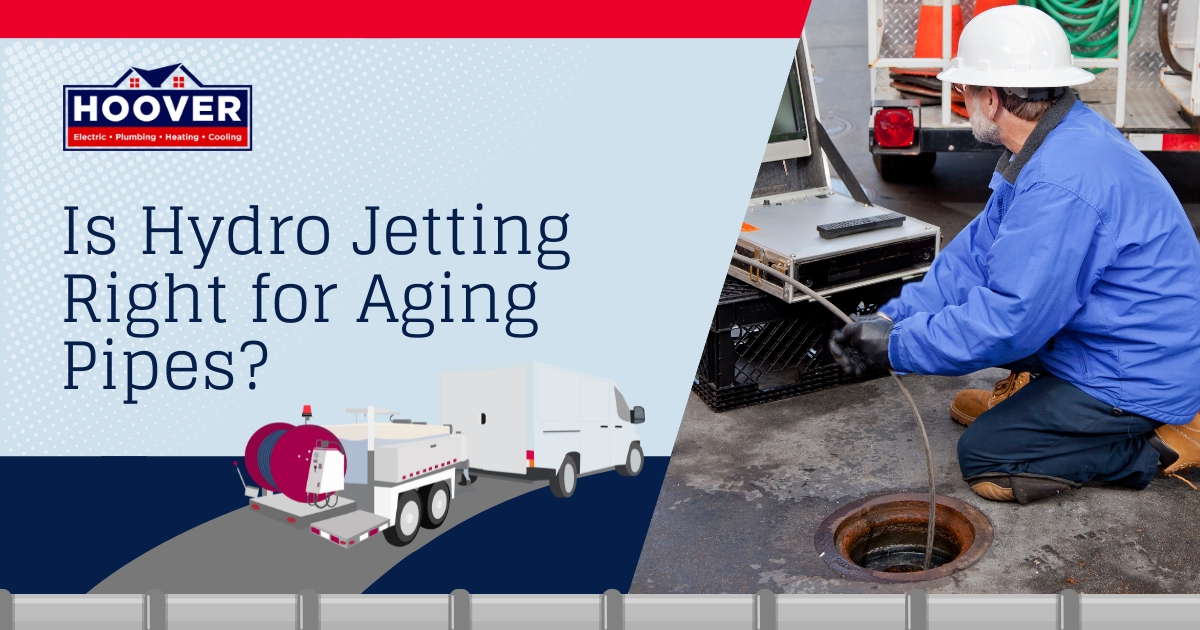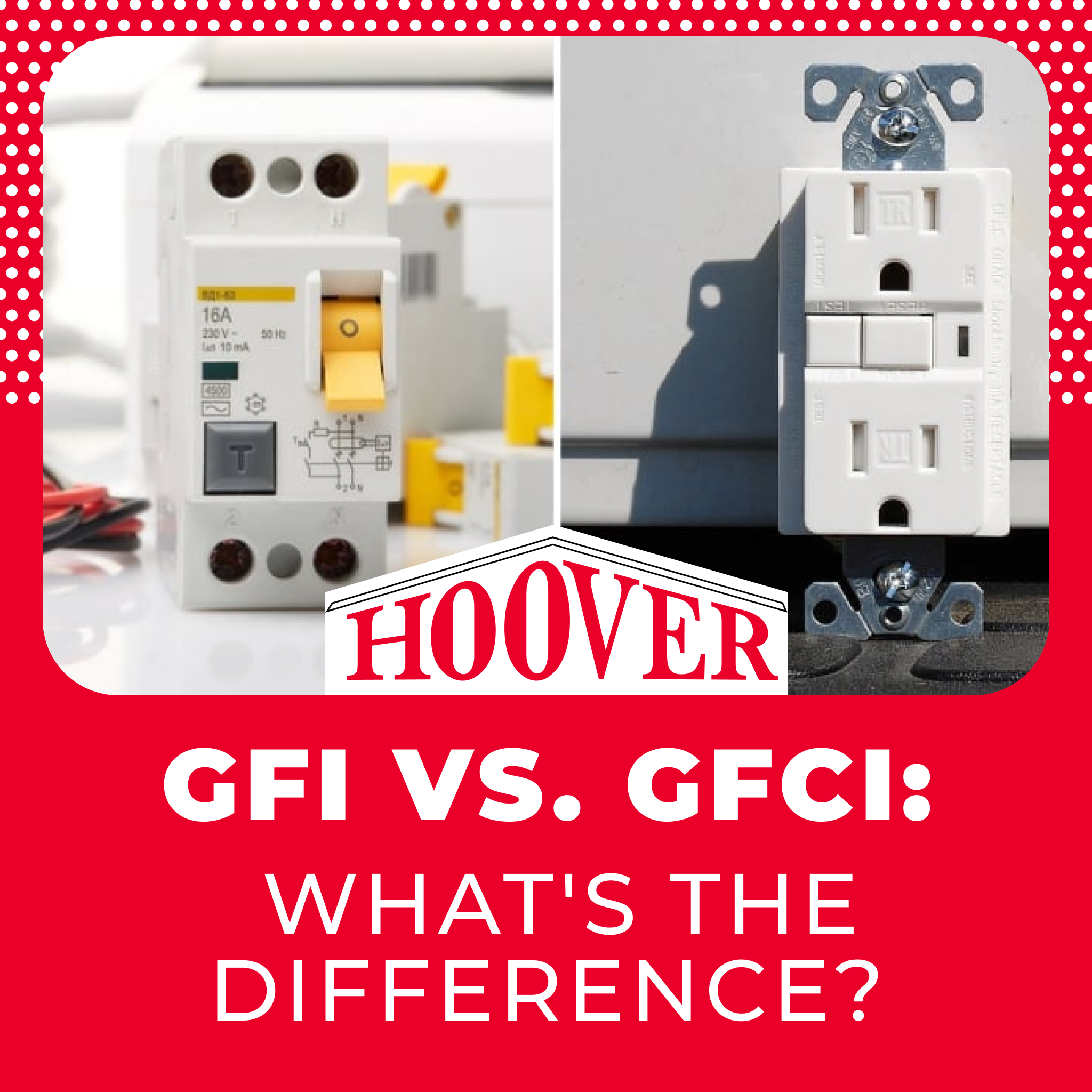
Maximum heating comfort doesn’t require maximum furnace power — instead, a high-performance heating system’s size should align with your home’s exact heating needs. With Hoover’s heating sizing guide, you can explore the effects of an oversized vs. properly sized furnace and how accurate sizing guarantees efficiency and home comfort.
Understanding Heater Sizing: What Does It Mean?
Heater size is measured in British Thermal Units (BTUs), which represent the amount of heat a furnace can produce in one hour. The square footage of your home mainly determines the required BTU output, but local climate, insulation, and home layout also affect heat loads. For example, two homes with the same square footage but with different insulation levels are likely to have different heating loads.
Choosing the right heater size optimizes comfort, efficiency, and system longevity. An accurately sized heater provides even warmth without overworking the system or wasting energy.
The Problems with an Oversized Heater
While more powerful, a larger heater doesn’t necessarily provide better performance. Furnace sizing mistakes and an oversized unit can negatively impact heating system efficiency, comfort, and costs.
Short cycling
Short cycling refers to when a heater turns on and off in rapid succession, resulting in brief and intense heating cycles. If your heating system is too powerful, it heats your space and reaches the set thermostat temperature too quickly, triggering the end of the cycle. This creates uneven temperatures, wastes energy, and accelerates component wear.
Uneven heating
Since the system doesn’t run long enough to complete a full cycle, it can’t distribute heat evenly. Instead of gradual and consistent warmth, the furnace shuts off warm air before it reaches other areas. This results in hot spots near vents and cold spots in distant rooms or areas, inconsistent temperatures between multiple floors, and uncomfortable temperature swings.
Higher energy costs
Instead of operating with steady heating and optimal efficiency, an oversized heater uses more energy than necessary to power rapid and intense cycles. This leads to higher electricity or fuel costs to heat your home.
Increased humidity problems
Heating systems regulate humidity by balancing air circulation and temperature. When an oversized heater short cycles, it doesn’t run long enough to control indoor humidity and leaves excess moisture. In dry climates, rapid heating may remove too much moisture and cause overly dry air that irritates sinuses, skin, and respiratory systems.
Shorter equipment lifespan
Because an oversized heater constantly turns on and off, its components experience excessive wear. This results in more frequent breakdowns and repairs over the heater’s lifespan. Inefficient operation may also shorten the system’s lifespan, leading to premature replacement.
The Problems with an Undersized Heater
An undersized heater struggles to keep up with heating demands, leading to discomfort and inefficient performance.

Struggling to maintain indoor temperature
A small heater may not generate enough heat to maintain a comfortable indoor temperature, leading to cold spots and inadequate warmth overall, especially in large or multi-level homes.
Heater running constantly
To compensate for its lower heating capacity, an undersized heater may run for extended periods or continuously. Prolonged heating cycles lead to higher energy bills, increased stress on system components, and increased risk of overheating and sudden shutdowns.
Increased wear and tear
Constant operation puts excessive strain on an undersized unit, causing frequent malfunctions or breakdowns and shortening the system’s lifespan. For example, degraded ignition system components may increase the risk of heat exchanger cracks and associated carbon monoxide leaks.
Poor energy efficiency
While less heating power may give the impression of lower energy consumption, continuous strain and operation negates any energy savings. Instead of heating efficiently, the system over-consumes fuel while failing to maintain proper comfort.
How to Choose the Right Heater Size for Your Home
Several factors influence the amount of heating power required for a home. While square footage provides a guideline, it’s also important to consider other variables to determine an exact heating load.
HVAC professionals use Manual J Load Calculations to analyze heat loss, ductwork efficiency, external temperature fluctuations, and sunlight and the effects these factors have on heating needs.
- Square footage: The larger the home, the higher the BTU requirement.
- Climate: Warmer climates require lower BTUs per square foot, and colder climates require higher BTUs.
- Insulation: Proper insulation helps retain warmth better and needs less powerful heating.
- Layout and ceiling height: High ceilings, multiple stories, and open layouts require more heating output.
- Windows and doors: More windows and doors allow heat to escape.
- Occupants and appliances: More people and appliances generate more heat, slightly reducing heating needs.
Recommended BTU Ranges for Home Heating
In general, homes require about 20 to 40 BTUs per square foot for their home heating system size. In Troy and other Michigan areas, however, homeowners are subject to more severe winter temperatures and instead need about 50 to 60 BTUs per square foot.
| Home Size (sq. ft.) | Recommended Heater Size (BTUs) |
| 500–1,000 | 24,000–40,000 |
| 1,000–1,500 | 40,000–60,000 |
| 1,500–2,000 | 60,000–80,000 |
| 2,000–2,500 | 80,000–100,000 |
| 2,500+ | 100,000+ |
(Note: Actual size depends on climate and insulation.)
Energy Efficiency and Heater Sizing
Combined with the right heater sizing, prioritizing high-efficiency models supports enhanced comfort, improved system longevity, and lower total costs.
Annual fuel utilization efficiency (AFUE) ratings indicate how efficiently a heater converts fuel into usable heat. These ratings are expressed as a percentage — for example, an 80% AFUE furnace converts 80% of fuel into usable heat and loses about 20%. High-efficiency furnaces use variable speed blowers, condensing technology, and other features to minimize heat and energy loss, achieving between 90% and 98% AFUE. Even if both systems share the same BTU rating, a high-efficiency system offers superior efficiency and performance since it has minimal fuel waste.
Heater Installation: Getting It Right the First Time
Proper installation makes sure your heating operates at peak performance. A certified HVAC professional calculates your heating needs and helps select a properly sized and high-efficiency model. After providing an estimate and detailed installation plan, they install the new unit according to manufacturer specifications and local HVAC building codes to optimize efficiency and safety.
Final Thoughts: The Key to Proper Heater Sizing
A bigger heater doesn’t translate to better heating performance. With Hoover, you can count on our team to install a properly sized heater for your home’s comfort. Contact us to schedule a service or get a free heating installation estimate.
Frequently Asked Questions
How does ductwork affect heating efficiency?
Ductwork distributes warm air throughout your home. Leaky ducts waste up to 20% of your heating’s efficiency, and poor insulation allows heat to escape before it reaches its destination. Incorrectly sized or designed ductwork also restricts airflow.
What should I ask my HVAC contractor before heating installation?
Ask your contractor these questions before heating installation to help inform your decisions:
- How will you determine the correct heater size for my home?
- Do you perform a Manual J Load Calculation before installation?
- What efficiency rating should I choose for my furnace?
- Can my current ductwork handle a new heating system?
- Do you offer financing for heater installation?
- Do you offer warranties or guarantees on heater installation?


